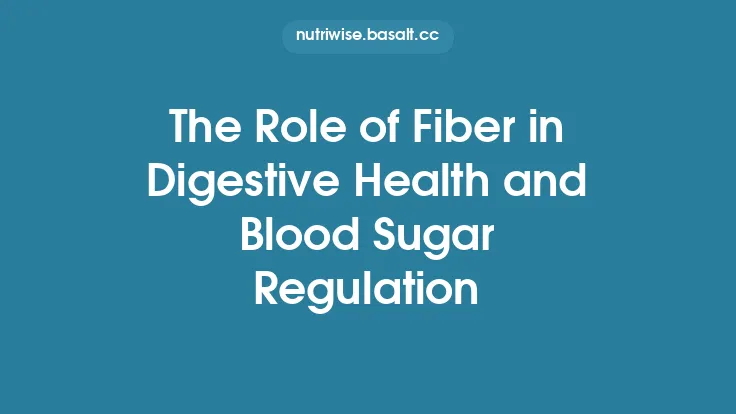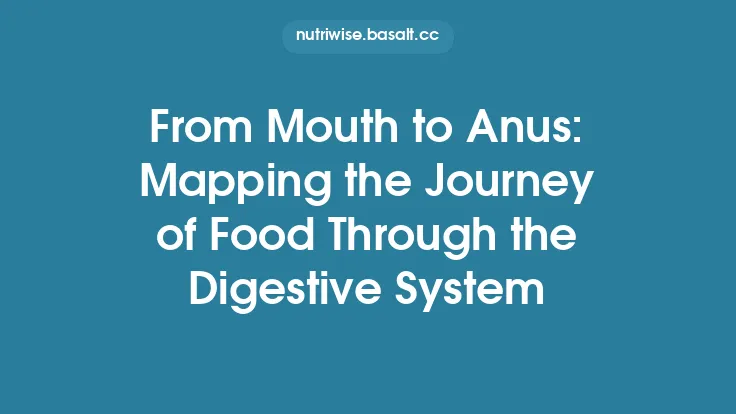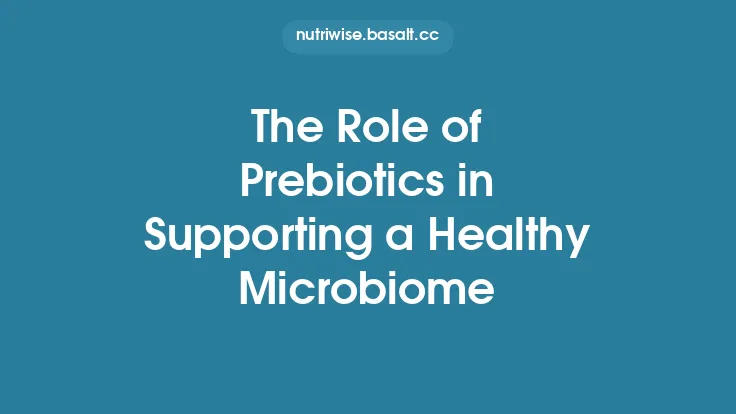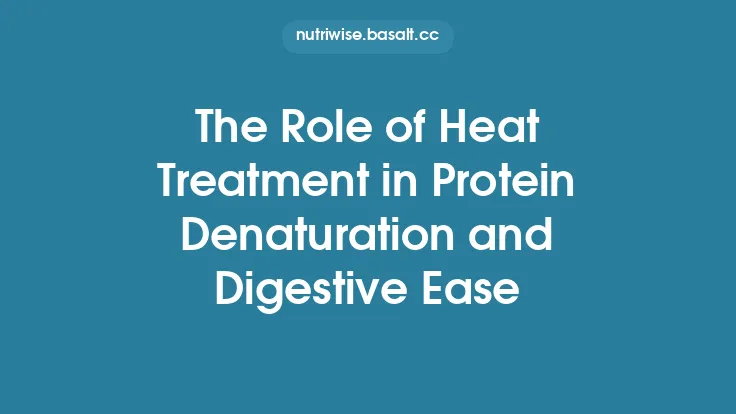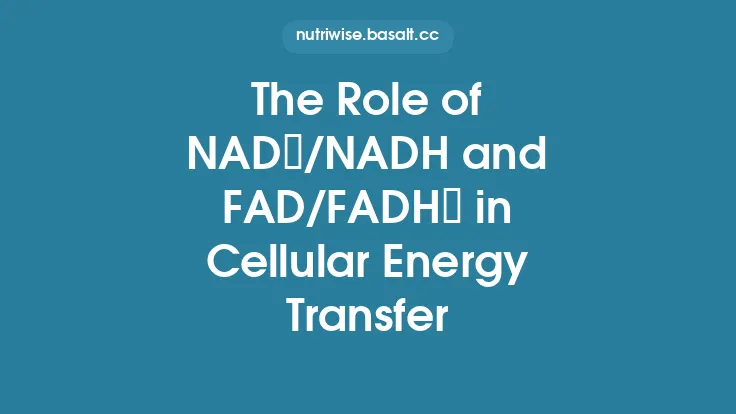Digestive enzymes are the molecular workhorses that transform the complex macronutrients we consume—carbohydrates, proteins, and fats—into absorbable units that the body can utilize for energy, growth, and repair. While the act of eating may feel instantaneous, the biochemical cascade that follows is a highly orchestrated series of events, each step dependent on the precise action of specific enzymes. Understanding how these enzymes operate, how they are coordinated throughout the gastrointestinal (GI) tract, and why their proper function is essential for health provides a foundation for appreciating the broader field of food science and digestion.
Overview of the Digestive Enzyme System
The human digestive system can be viewed as a series of compartments, each equipped with a distinct enzymatic repertoire tailored to the physical and chemical environment of that segment. Broadly, the system can be divided into three functional zones:
- Oral Cavity – Initiates mechanical breakdown and introduces the first set of enzymes that begin macronutrient processing.
- Stomach – Provides an acidic milieu that denatures proteins and activates a second wave of enzymes.
- Small Intestine – Serves as the primary site for enzymatic hydrolysis, where the bulk of macronutrient conversion occurs before absorption.
Enzyme secretion is tightly coupled to the presence of food through neural (e.g., vagal) and hormonal (e.g., gastrin, cholecystokinin) signals. This ensures that enzymes are released in the right quantity, at the right time, and in the appropriate location, preventing wasteful loss of catalytic potential and protecting the mucosal lining from premature exposure to active enzymes.
Macronutrient Categories and Their Enzymatic Targets
Each macronutrient class possesses a characteristic chemical architecture that dictates the type of enzymatic attack required for its breakdown:
- Carbohydrates – Polysaccharides such as starch and glycogen consist of long chains of glucose units linked by α‑glycosidic bonds. Enzymes cleave these bonds to yield disaccharides (e.g., maltose) and ultimately monosaccharides (e.g., glucose). The process involves successive removal of terminal residues, a strategy known as “exolysis,” as well as internal cleavages (“endolysis”) that fragment the polymer.
- Proteins – Built from amino acids linked by peptide bonds, proteins present a diverse array of side‑chain chemistries. Enzymes hydrolyze the peptide bond, releasing di‑ and tripeptides, and eventually free amino acids. Because peptide bonds are relatively stable, proteolytic enzymes often act in a stepwise fashion, first exposing the protein to denaturing conditions before cleaving the backbone.
- Lipids – Dietary fats are primarily triglycerides, each comprising a glycerol backbone esterified to three fatty acid chains. Enzymatic hydrolysis of the ester linkages liberates free fatty acids and mono‑glycerides, which can then be incorporated into micelles for absorption.
While the specific enzymes responsible for each macronutrient are covered in depth elsewhere, the overarching principle is that each class of macronutrient requires a distinct catalytic strategy: glycosidic bond cleavage for carbohydrates, peptide bond hydrolysis for proteins, and ester bond cleavage for lipids.
Sequential Enzyme Action in the Gastrointestinal Tract
The breakdown of macronutrients is not a single, monolithic event but rather a cascade of overlapping enzymatic activities. This sequential nature can be illustrated by tracing the journey of a mixed meal:
- Oral Phase – Mechanical chewing increases surface area, while a modest amount of enzyme activity begins the hydrolysis of starches. The resulting partially digested carbohydrates form a slurry that is readily swallowed.
- Gastric Phase – The acidic environment denatures protein structures, exposing peptide bonds to enzymatic attack. Concurrently, a limited amount of lipid emulsification occurs, preparing fats for later digestion.
- Duodenal Phase – As chyme enters the duodenum, bile salts are released, creating an emulsified lipid phase that dramatically increases the surface area for enzymatic action. Here, the bulk of carbohydrate, protein, and lipid hydrolysis takes place, with enzymes acting in concert to reduce macromolecules to their absorbable monomers.
- Jejunal and Ileal Phases – Residual enzymatic activity continues to polish the breakdown products, ensuring that any remaining oligosaccharides, dipeptides, or partially hydrolyzed lipids are fully converted before transport across the intestinal epithelium.
The timing and overlap of these phases are crucial. For instance, incomplete protein denaturation in the stomach can impede subsequent proteolysis, while insufficient lipid emulsification can limit the accessibility of triglycerides to the enzymes that act later in the small intestine.
Enzyme Specificity and Catalytic Mechanisms
Digestive enzymes exhibit a high degree of substrate specificity, a property rooted in the precise three‑dimensional arrangement of amino acid residues within their active sites. Two fundamental concepts underlie this specificity:
- Lock‑and‑Key Model – The enzyme’s active site is pre‑shaped to accommodate a particular substrate or a narrow range of structurally related substrates. This model explains why a carbohydrate‑specific enzyme will not act on a peptide bond, and vice versa.
- Induced Fit Model – Upon substrate binding, subtle conformational changes in the enzyme further optimize the active site for catalysis. This dynamic adjustment enhances catalytic efficiency and can accommodate slight variations in substrate structure (e.g., different sugar stereochemistry).
Catalytically, most digestive enzymes employ a nucleophilic attack on the target bond, facilitated by a catalytic triad or dyad of amino acid residues (commonly serine, histidine, and aspartate). The reaction proceeds through a transient covalent intermediate, which is then hydrolyzed to release the cleaved product and regenerate the free enzyme. This mechanism allows a single enzyme molecule to turnover thousands of substrate molecules per second, underscoring the remarkable efficiency of the digestive system.
Integration with Hormonal and Neural Regulation
Enzyme secretion does not occur in isolation; it is tightly integrated with the body’s broader regulatory networks. Two principal pathways coordinate enzyme release:
- Neural Reflexes – The sight, smell, or even thought of food can trigger vagal stimulation, prompting the salivary glands and stomach to begin secreting enzymes in anticipation of incoming nutrients. This cephalic phase ensures that the digestive machinery is primed before the food physically arrives.
- Hormonal Feedback Loops – As nutrients enter the duodenum, enteroendocrine cells release hormones such as cholecystokinin (CCK) and secretin. CCK stimulates the pancreas to secrete a cocktail of enzymes, while secretin promotes bicarbonate release to neutralize gastric acidity, creating an optimal pH for enzymatic activity. These hormones also modulate gallbladder contraction, ensuring that bile is available to emulsify lipids.
The interplay between neural and hormonal signals creates a feedback system that adjusts enzyme output based on the composition and volume of the meal, thereby maintaining digestive efficiency while preventing over‑secretion.
Clinical Implications of Enzyme Deficiencies
When the finely tuned balance of enzyme production, activation, or secretion is disrupted, macronutrient digestion can be compromised, leading to a spectrum of clinical manifestations:
- Exocrine Pancreatic Insufficiency (EPI) – Insufficient pancreatic enzyme output reduces the hydrolysis of all three macronutrient classes, resulting in steatorrhea (fatty stools), weight loss, and malnutrition. Diagnosis often involves measuring fecal elastase, a surrogate marker of pancreatic enzyme secretion.
- Lactase Deficiency – A specific carbohydrate‑digesting enzyme, lactase, declines in many adults, leading to lactose intolerance. Undigested lactose ferments in the colon, producing gas and osmotic diarrhea.
- Congenital Enzyme Deficiencies – Rare genetic disorders can impair the synthesis of particular digestive enzymes (e.g., congenital sucrase‑isomaltase deficiency), causing chronic gastrointestinal symptoms from early childhood.
Management of these conditions typically involves enzyme replacement therapy tailored to the deficient activity, dietary modifications to reduce the load of problematic macronutrients, and monitoring for secondary nutrient deficiencies (e.g., fat‑soluble vitamins in EPI).
Emerging Research and Future Directions
The field of digestive enzyme science continues to evolve, driven by advances in molecular biology, imaging, and computational modeling. Several promising avenues are shaping the next generation of knowledge:
- Microbiome‑Enzyme Interactions – The gut microbiota produces a vast array of carbohydrate‑active enzymes (CAZymes) that complement host digestion. Understanding how microbial enzymes synergize with human enzymes could inform personalized nutrition strategies.
- Enzyme Engineering – Recombinant technology enables the design of enzymes with enhanced stability, altered substrate specificity, or resistance to inhibitors. Such engineered enzymes have potential applications in therapeutic supplementation and in the food industry for processing complex ingredients.
- Real‑Time In Vivo Imaging – Novel imaging probes allow visualization of enzyme activity within the GI tract in live subjects. This capability could revolutionize the diagnosis of functional enzyme deficiencies and the assessment of drug‑enzyme interactions.
- Systems Biology Approaches – Integrating transcriptomic, proteomic, and metabolomic data provides a holistic view of how enzyme expression adapts to dietary patterns, disease states, and aging. These insights may lead to predictive models that guide dietary recommendations based on individual enzymatic capacity.
Collectively, these research frontiers aim to deepen our understanding of how digestive enzymes orchestrate macronutrient breakdown, ultimately translating into improved health outcomes and more efficient food processing technologies.
By appreciating the coordinated action of digestive enzymes across the gastrointestinal tract, we gain insight into the fundamental processes that convert the foods we eat into the building blocks of life. This knowledge not only informs clinical practice and nutritional counseling but also underpins innovations in food science, biotechnology, and personalized medicine.
